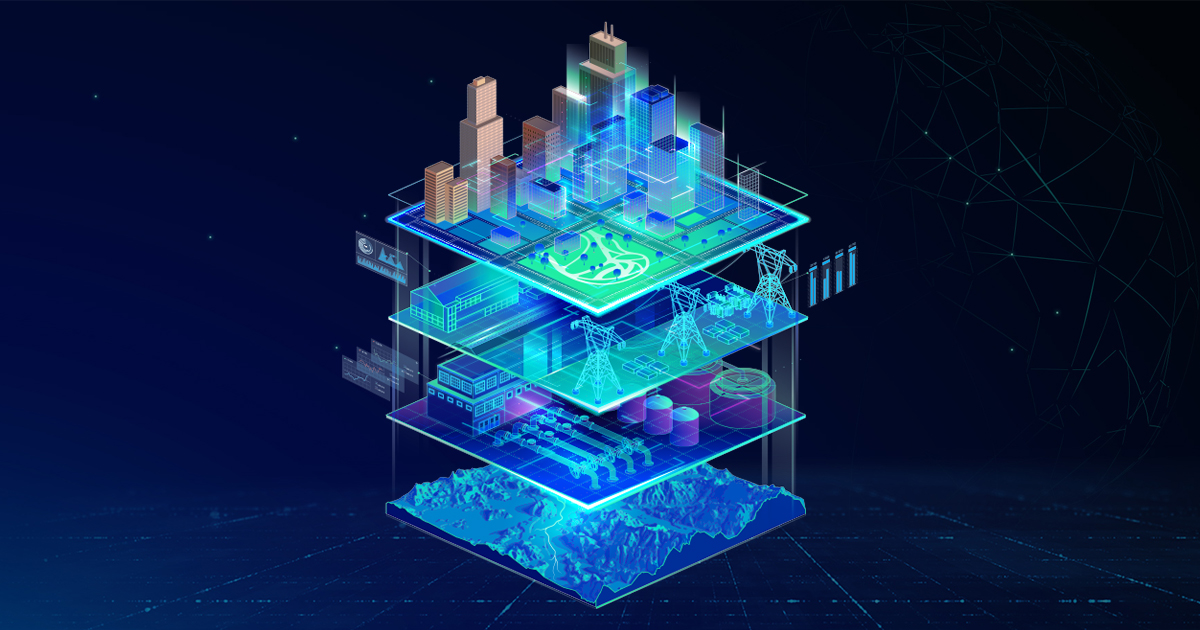Digital twins on the manufacturing menu – with help from the hyperscalers
SOURCE: HTTPS://WWW.IOTTECHNEWS.COM/
NOV 16, 2023
WiMi Applied Multi-Level Simulation to Digital Twin Modeling
SOURCE: HTTPS://AITHORITY.COM/
OCT 03, 2023

WiMi Hologram Cloud a leading global Hologram Augmented Reality Technology provider announced that it has applied multi-level simulation to digital twin modeling and has actively explored the application of multi-level simulation digital twin modeling technology. Multi-level simulation digital twin modeling technology can abstract and model the features and behaviors of physical entities at different levels, and the modeling at each level can include different details and precision to meet the needs of different application scenarios, thus forming a hierarchical digital model.
All this, while interconnecting the different levels of the digital twin model and enabling them to interact with each other to achieve comprehensive modeling and simulation of the physical system, so that the digital twin model can better reflect the complexity and dynamics of entities and provide more accurate and comprehensive information for decision makers.
In the multi-level simulation digital twin modeling technology studied by WiMi, the key modules include data acquisition and processing, model building and calibration, and simulation and optimization, which cooperate with each other to build a multi-level digital twin system. Among them, the data acquisition and processing module is mainly responsible for collecting sensor data from physical entities, and processing and analyzing the data to extract useful information. The model building and calibration module is mainly responsible for building digital models based on the characteristics and behaviors of physical entities, and calibrating and optimizing them through data interaction with the entities, while the simulation module is responsible for simulating the operation of the entities and predicting and optimizing them based on the simulation results.
Data collection and integration: This module is responsible for collecting data from the actual system and integrating it with the digital twin model. This includes steps such as sensor data acquisition, data pre-processing, data cleaning and data alignment. Through data acquisition and integration, the digital twin model can be synchronized and updated with the actual system.
Multi-level model coupling: This module is used to connect and interact digital twin models at different levels with each other. This can be realized through data transfer, parameter transfer, state transfer and so on. Through multilevel model coupling, information and feedback can be transferred between models at different levels to realize the overall simulation and analysis of the system.
Simulation engine: The simulation engine is the core component that performs digital twin modeling and simulation. It is responsible for performing simulation calculations, state updates, event processing and other tasks of the model. The simulation engine can select appropriate simulation algorithms and numerical computation methods according to the characteristics and requirements of the model to achieve efficient and accurate simulation results.
Visualization and interactive interfaces: The visualization and interactive interfaces module is used to present the results of the digital twin model to the user in a visual form and provide the ability for the user to interact with the model. This can be achieved through diagrams, images, animations, virtual reality, etc. The interface allows the user to explore different scenarios, parameters and decisions in order to make more accurate predictions and optimizations.
Analysis and decision support: The analysis and decision support module is used to analyze the results of the digital twin model and provide decision support. Statistical analysis, trend analysis, and optimization algorithms of the model results provide insight into the state, performance, and change trends of the system. Based on these analysis results, decisions can be made, system operations can be optimized, and future behavior can be predicted.
Through the multi-level simulation digital twin modeling technology, users can fully understand and analyze all levels and aspects of the physical system, thus enabling decision makers to conduct a comprehensive and accurate analysis and assessment of the entity’s operation, helping them to make better decisions and optimization strategies. At the same time, digital twin technology also provides new means and methods for monitoring, maintenance, and improvement of entities, improving their operational efficiency and reliability. Multi-level simulation digital twin modeling technology can also fuse information from different data sources, including experimental data, sensor data and simulation data. At the same time, multi-source data integration can also make up for the problem of incomplete or inaccurate data and improve the reliability of modeling.
Multi-level simulation digital twin modeling technology has a wide range of applications and prospects in the future. It will play an important role in intelligent manufacturing, urban planning, healthcare, transportation and other fields, providing scientific support and decision-making reference for the development of various industries.
LATEST NEWS
WHAT'S TRENDING


Data Science
5 Imaginative Data Science Projects That Can Make Your Portfolio Stand Out
OCT 05, 2022

SOURCE: HTTPS://WWW.IOTTECHNEWS.COM/
NOV 16, 2023
SOURCE: HTTPS://WWW.SCIENCEDAILY.COM/
AUG 08, 2023
SOURCE: HTTPS://WWW.GLOBALLOGIC.COM
JUL 06, 2023
SOURCE: HTTPS://INDIAAI.GOV.IN/ARTICLE/HOW-DIGITAL-TWIN-TECHNOLOGY-WILL-EVOLVE-IN-2023
JUL 04, 2023
SOURCE: HTTPS://WWW.CNBC.COM/2023/01/21/DIGITAL-TWINS-ARE-SET-FOR-RAPID-ADOPTION-IN-2023.HTML
JUN 30, 2023